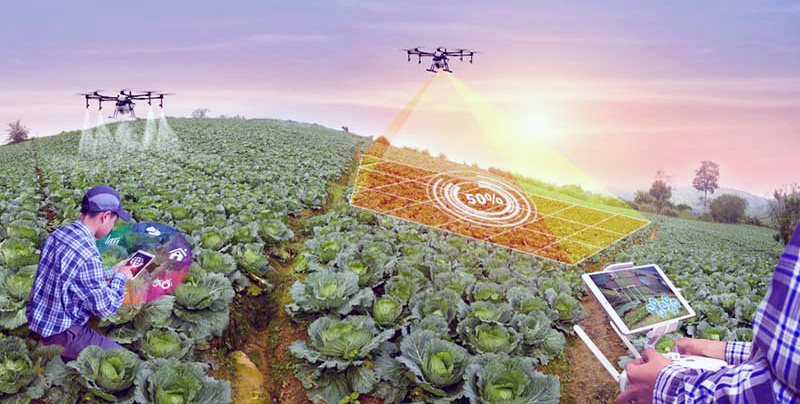Agriculture has undergone rapid transformations such that it is no longer fashionable to think of farming in terms of farmland, cutlass and hoe technology, manual labour, animals and simple tools.



It is now possible to grow crops without necessarily having a piece of land; that is using containers and hydroponics – growing them in containers with little water, without soil, compost manure and fertilizer.
The other method is the greenhouse farming technology which is about growing crops and plants such tomatoes, pineapples, and peppers inside a greenhouse.
It has the advantage of protecting crops from harsh weather conditions thus reducing harmful effects of pests and diseases, guaranteeing all-year-round farming as well as better management and control of plant environment.
Today, farming has gone beyond that. Farming is more and more taking advantage of emerging technologies to increase quantity and quality of agricultural produce.
This is not restricted to use of tractors and few other equipment, but adopting what could be described as smart farming.
Smart farming is the adoption of advanced technologies and data-driven farm operations such as Artificial Intelligence (AI), automation and Internet of Things (IoT) to optimise and improve sustainability in agricultural production.
With the aid of smart farming techniques such as Global Positioning System (GPS), farmers can monitor animals and adjust their nutrition to protect them from disease or use smart phones to monitor prices and sell their produce.
Smart farm is necessary because the world population is rapidly increasing while available arable land for farming is static.
So, the only way to increase food production to feed the ever-increasing population is to embrace smart farming techniques.
Crops such as corn, wheat, soy, cotton, sorghum, barley, sugar cane and potato and many others can be produced using smart farming.
As Kristen Lauria, General Manager of Watson Media and Weather Solutions, IBM, once said, “These days, farmers don’t just farm food, they also cultivate data – from drones flying over fields to smart irrigation systems, and IoT sensors affixed to combines, seeders, sprayers and other equipment.”
With these smart technologies, farming is being raised to the next level that would certainly attract our teeming graduates who erroneously think that farming is mainly for the illiterate.
Climate change is complicating efforts to ensure sufficient food supply by reducing crop yields and threatening essential natural resources like irrigation water.
Besides climate-related issues, the agricultural sector is also grappling with profitability challenges due to rising input costs, fluctuating commodity prices, and increasing regulatory demands.
By adopting smart farming practices, we can better navigate the uncertainties posed by climate change, lessen environmental impacts, and enhance the resilience of agricultural production.
However, there are issues of funding and training to get the required skills. Since a lot of capital is involved, governments and companies should not hesitate to reduce high unemployment rate in the country by training interested youths in smart farming and funding them.














